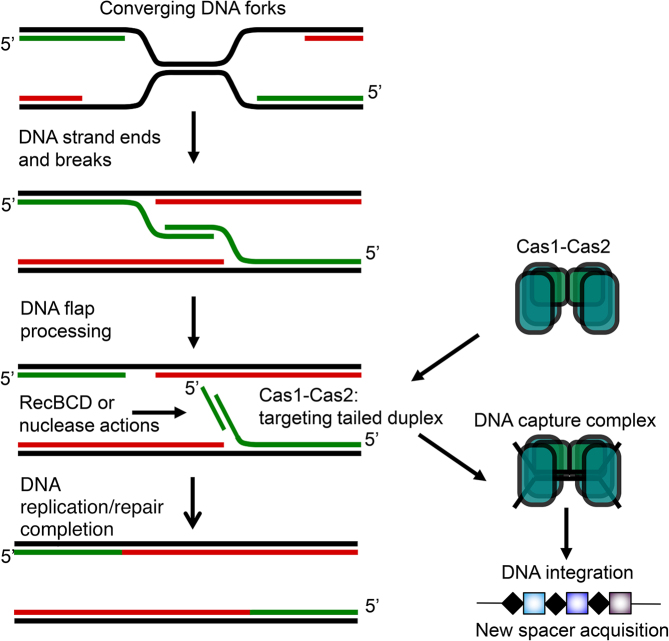Figure 6.
A model summarizing one way in which 5′ ssDNA tailed duplexes can arise in an area of the genome (Ter sites) that is targeted for new spacer acquisition during CRISPR–Cas adaptation reactions, and is processed by RecBCD and other enzymes during the normal cell cycle. The role of RecBCD during replication termination is unclear but its helicase activity may contribute to removal of nucleoprotein roadblocks in this context. Similar DNA structures that may be targeted by Cas1–Cas2 could also arise during global DNA and repair of replication forks, and during lagging strand replication of phage in the later stages of its replicative cycle.

